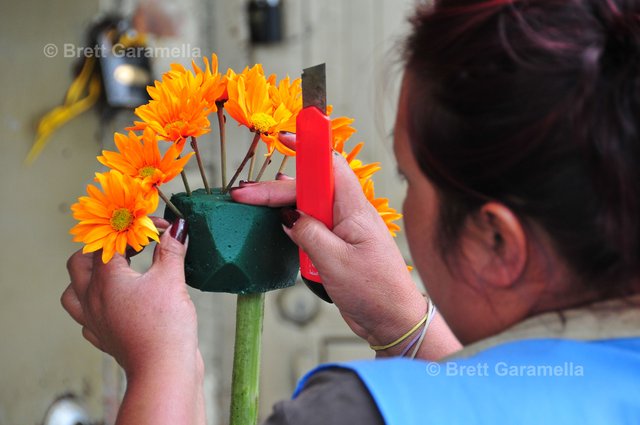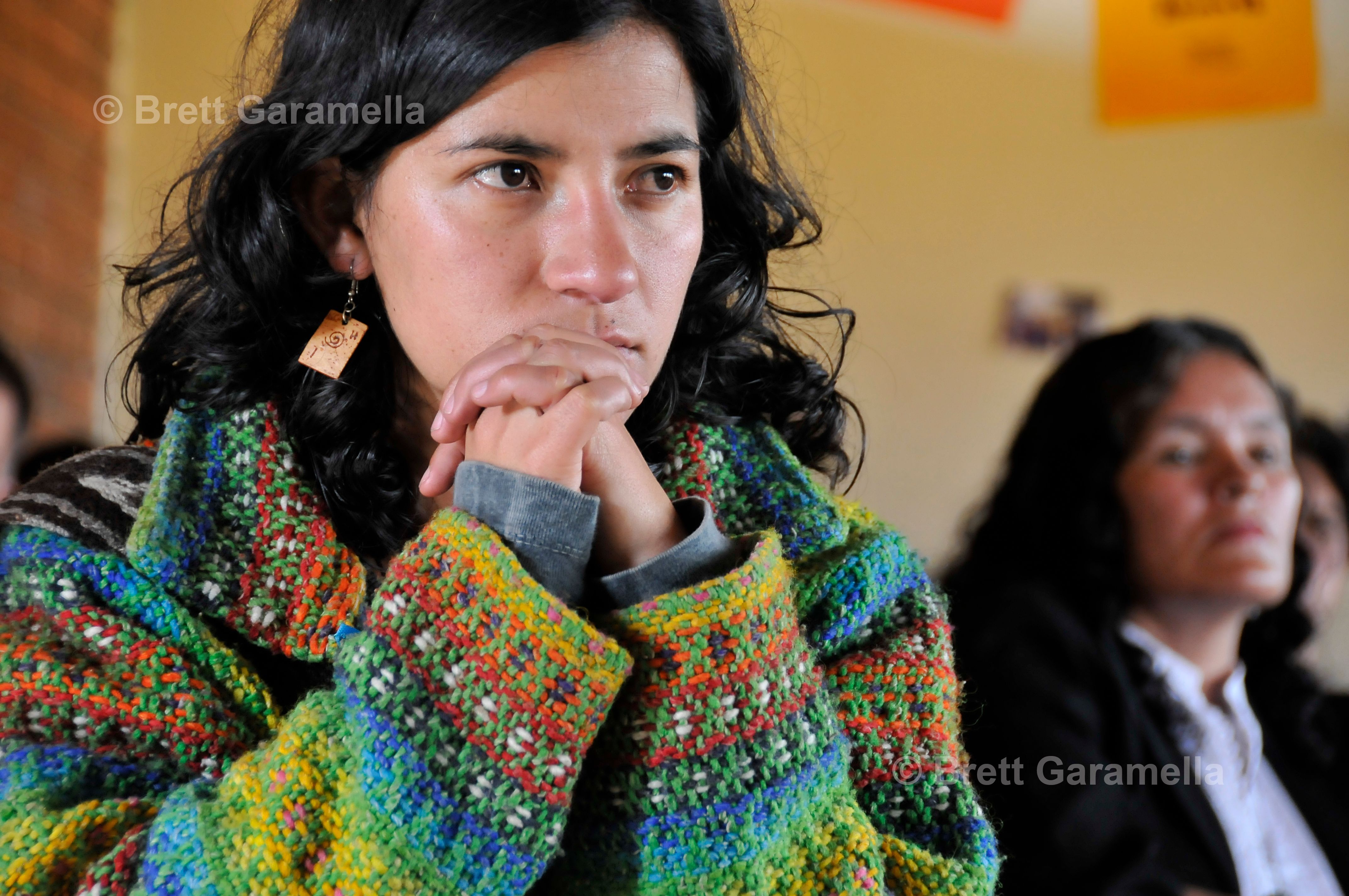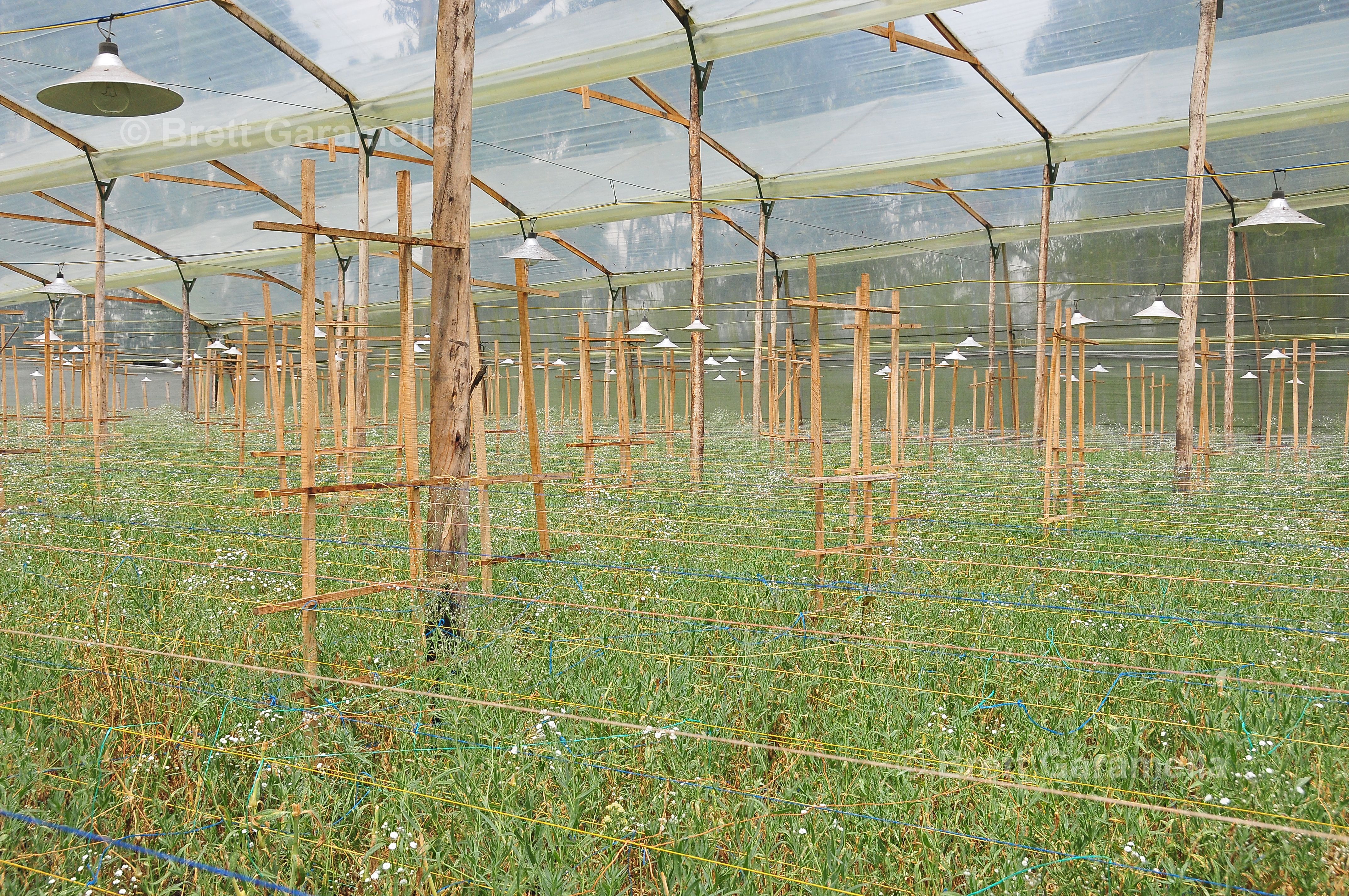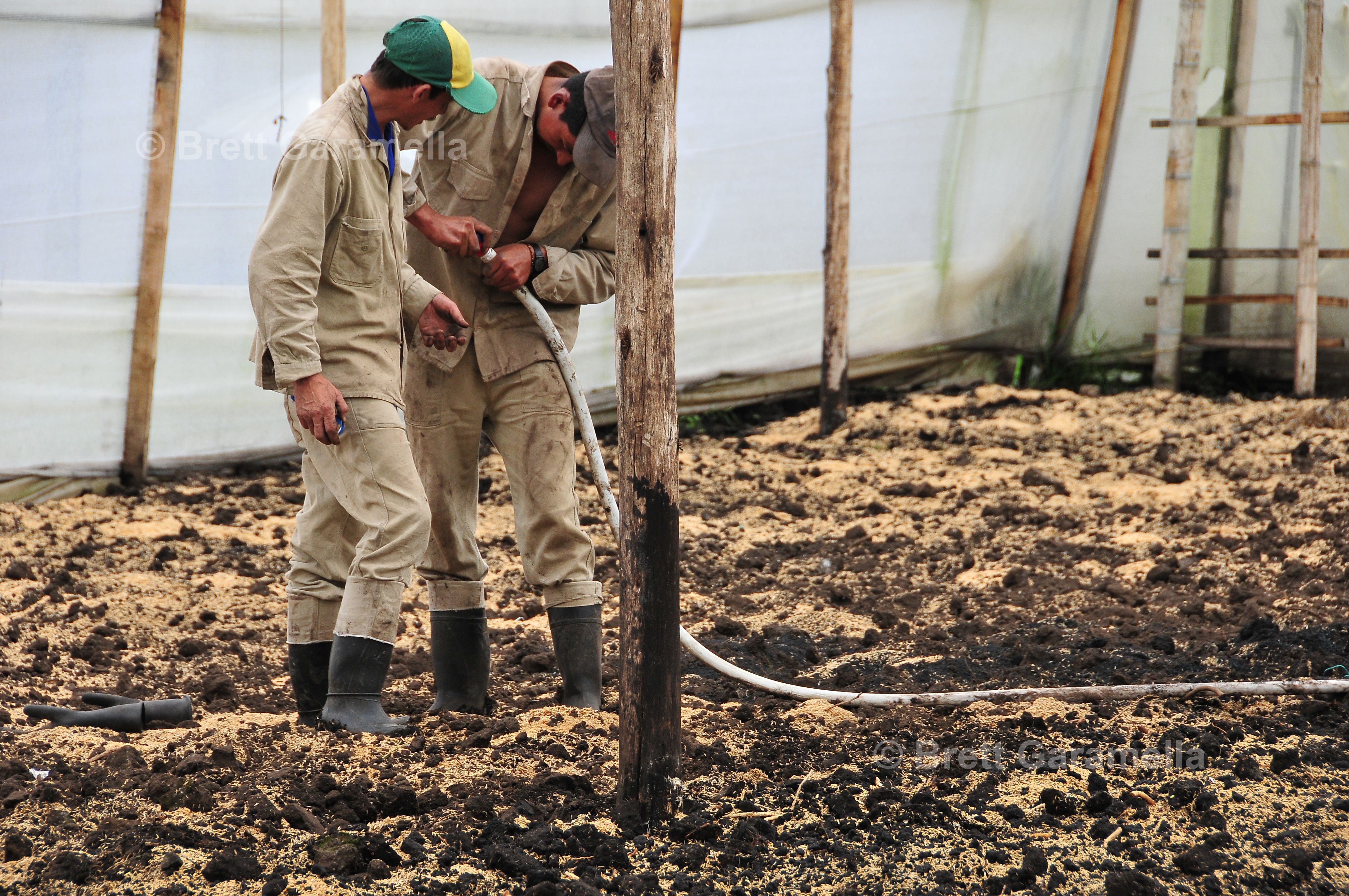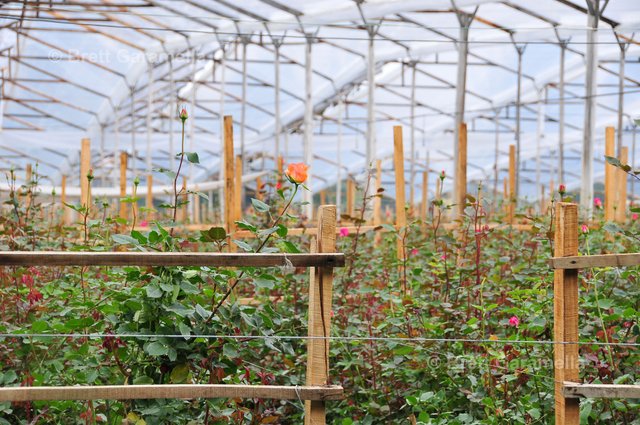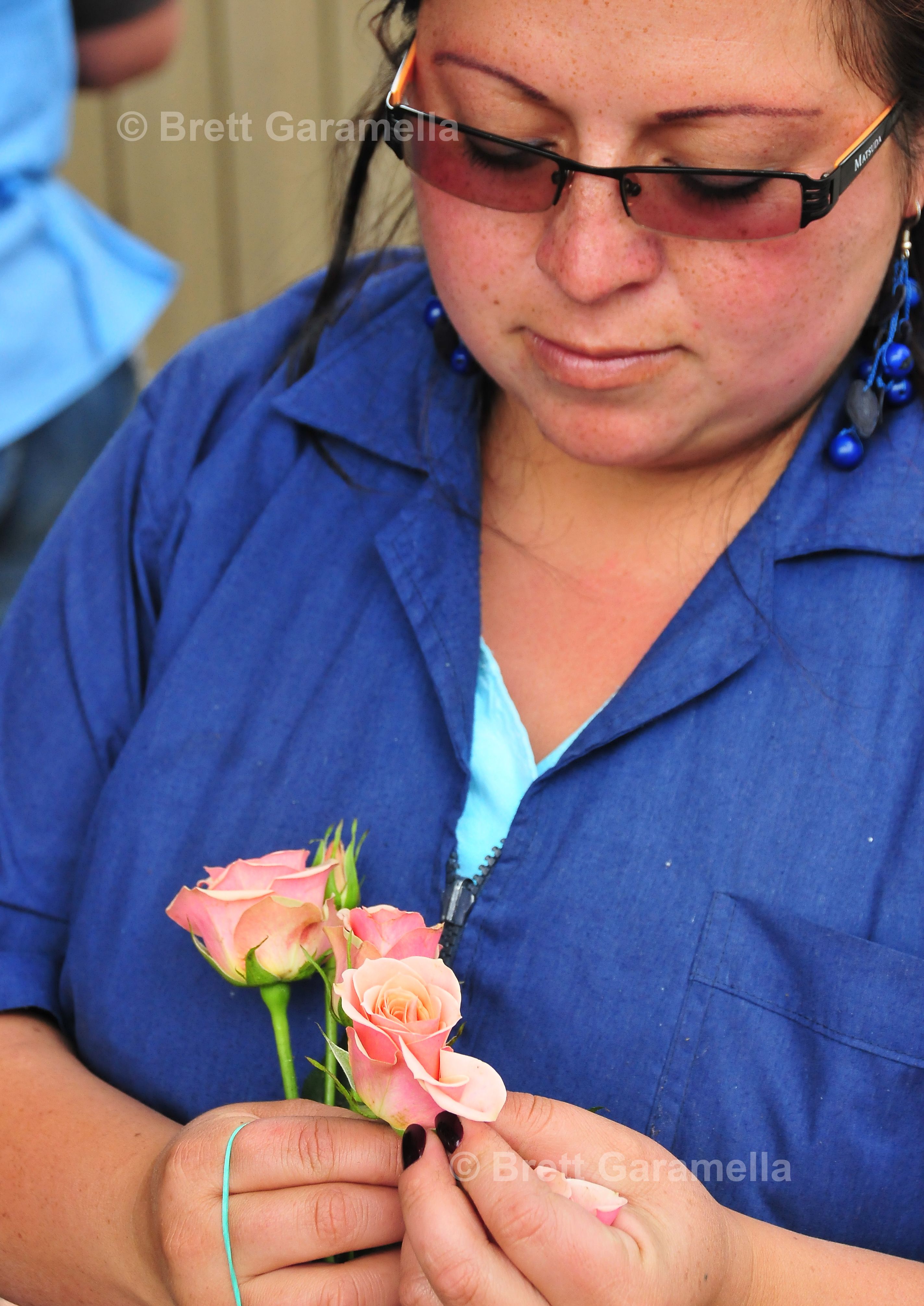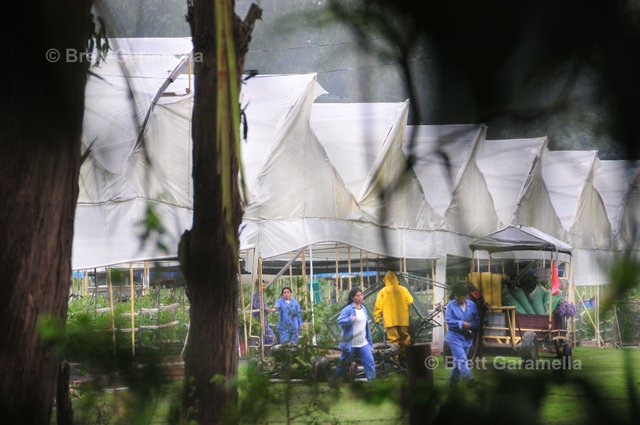A Rose With Many Thorns
Next time you think about buying flowers for a loved one or for your significant other, think about Colombia. You may want to do some research before you buy those roses for Valentine’s Day or those carnations for Mother’s Day.
Colombia is the largest flower exporter to the United States; 62% of all flowers sold in the U.S. come from Colombia, and include 50 different varieties. Nearly 80% of all flowers grown in Colombia are exported to the U.S. Most of the rest are imported from Ecuador, especially on Valentine’s Day. American companies make billions of dollars in profit each year from the flower industry as consumers spend nearly $20 billion. Yet full-time Colombian flower workers receive the minimum wage (461,500 pesos per month or 274.62 U.S. dollars per month). There are more than 100,000 workers in the Colombian flower industry, and 65% of them are women. Most of these women are single mothers. Three-quarters of the flowers exported from Colombia are grown in the flat land around Bogotá called the Savannah of Bogotá.
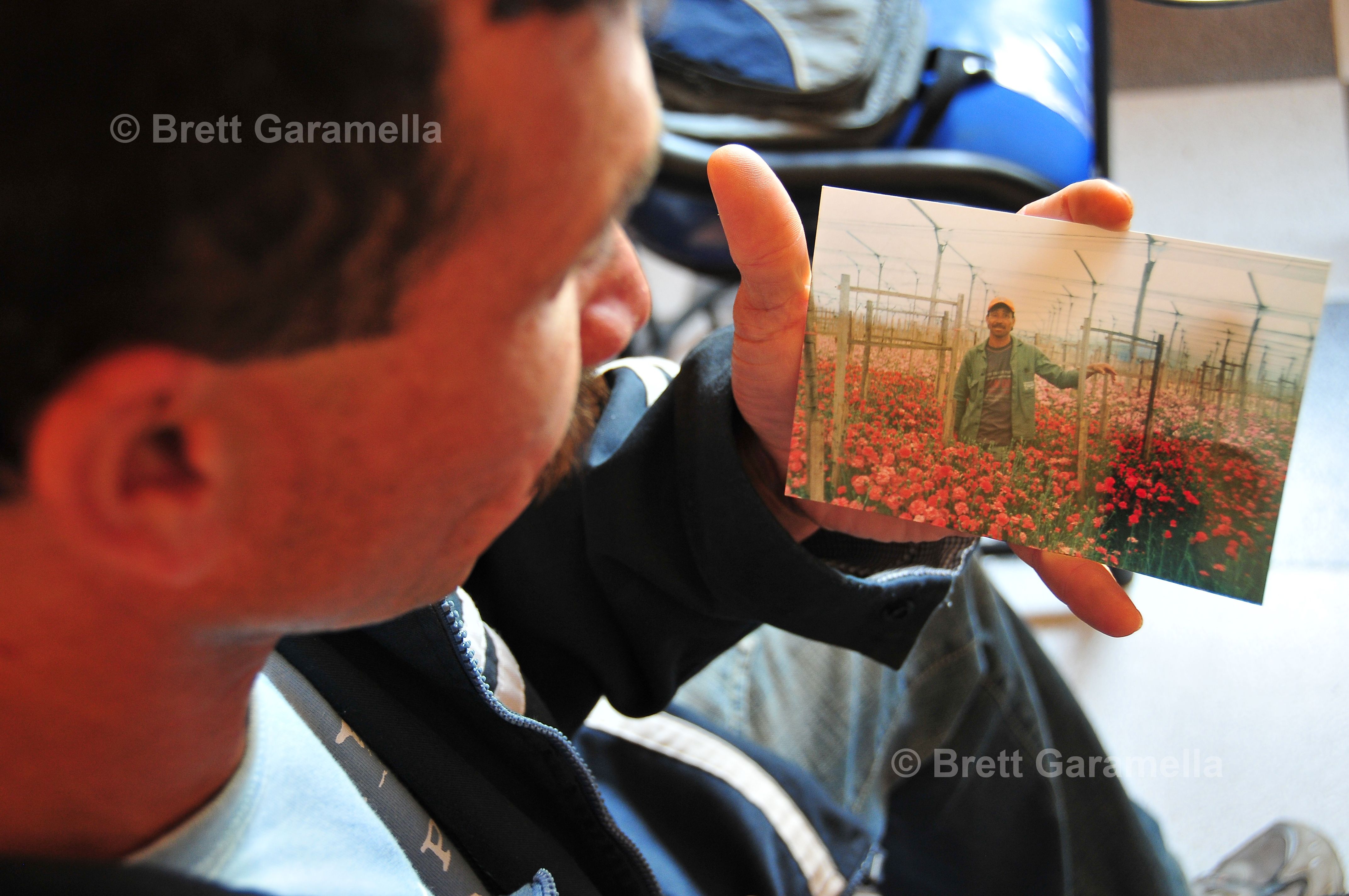
During the past two weeks I have spent a lot of time in a town called Facatativá, also known as “Faca.” It is in Faca that the largest flower plantation in Colombia recently shut down. Faca is a town of about 100,000, most of whom rely on the flower farms for jobs. One of these people, Beatriz Fuentes, is the union leader of that large plantation that shut down called Splendor. Most of the 1,700 workers at the plantation lost their jobs in the fall of 2007. The rest, like Fuentes, lost their jobs a few months later. I spent several days with Fuentes, her three children, and her husband, Jorge, who has worked on a flower plantation his entire life. I learned how much of a mystery the flower industry is and that by keeping it a secret, U.S. companies can hide the poor working conditions that many of these workers endure every day without any say toward a change. I also attended the first forum for social issues in the Savannah, which was held in Faca this weekend. Yesterday, flower workers and union leaders met inside an elementary school classroom to discuss how they can make their voices heard in a place where worker silence is the norm.
A Brief History of the Colombia Flower Industry
When the Colombia flower industry began in the late 1960s it was virtually nonexistent. Back then the United States got most of its flowers from California.
With the year-round spring weather and plenty of sun and rain in the areas around Bogotá and Medellín, flowers can be grown all the time. While about 75% of Colombian flowers are grown around Bogotá, the majority of the rest are grown near Medellín. Because of a history of guerilla violence, the big Colombian cities have become safe havens for rural peasants with little education. Many of these people can only find jobs on the flower farms, just as the coffee farms provide the majority of work in Eje Cafetero.
About 95% of Colombian flowers exported to America arrive duty-free thanks to the Andean Trade Preferences Act. This law was passed in 1991 in hopes of switching production of coca leaves and opium poppies to legal crops, critics argue. However, recent statistics show that illegal crop production is the same as it was before. Then again, flower production has risen dramatically in the past 10 and 20 years, yet the weak U.S. dollar hasn’t helped the flower industry in 2008.
Democrats, such as Barack Obama, have been outspoken on their disapproval of the free trade act with Colombia, citing a lack of union rights in Colombia. Farmers in California, who have lost the most jobs due to the growth of U.S. companies in the Savannah of Bogotá, have said that tariffs should be reimposed on Colombian flowers to save American flower growers’ businesses. With the duty-free trade act, U.S. flower companies will continue to move their farms from California to Colombia. They can make bigger profits because of the low pay and less overhead costs due to fewer restrictions on safety, chemicals, and overtime hours. The Savannah’s 2,000 hectares of flower farms in the 1980s has grown to its current 7,000 hectares.
The biggest change came in 1998 with the arrival of Dole Fresh Flowers, a subsidiary of the U.S. Dole Food Company, who bought several of the largest flower plantations. Since then wages have decreased and workers can no longer seek a job directly with a company’s boss; the workers have to talk to a middle man who then assigns them to work at a particular plant, often not a worker's top choice. Why work in one farm versus another? There are very few standards set across the board. Some companies pay their workers for overtime hours (more than 12 hours), others don’t. Some companies give their workers masks and protective clothing, others don’t. Some companies have bosses who verbally abuse their workers, while other bosses are fairer. Nevertheless, severance pay and pensions are a rarity. Often companies will fire a veteran worker just before they are eligible for enough years for a pension. The workers are often expected to do more than is possible, creating an environment of stress, while using many chemicals that are banned or forbidden to be used under U.S. law. This has resulted in miscarriages, carpal tunnel syndrome, discrimination, increasing use of subcontracting and short-term contracts, and occupational health illnesses.
To prevent an international outcry, the Colombian flower growers’ trade association, or Asocolflores, created a certificate called Florverde, or Green Flower. This certificate is supposed to guarantee environmental and social standards, which includes sealing off areas recently sprayed with pesticides and imposing a maximum working week of 48 hours with no more than 12 hours overtime. Since Asocolflores is in cahoots with large American companies such as Dole, this certificate is nothing more than propaganda to make distributors convince consumers that they are not part of the poor conditions for flower workers. Since 2003, 25% of Colombian flower farms have received a Florverde certificate, with an additional 17% on track to do the same, according to the BBC News.
While Colombia sells most of its flowers to the United States, a significant percentage is exported to Europe, Russia, and Japan. Sales from the Colombia flower trade earn more than $1 billion. In the United States most flowers are sold in large grocery store chains, putting many local florists out of business. The flowers are kept in refrigerators after being cut, and then flown from Bogotá to Miami, where they are shipped all across the U.S.
A Typical Day
Like Beatriz Fuentes, many Colombian flower workers wake up at 3 a.m. each morning so they can get their children dressed, fed, and ready for school before they wait for a bus at 5 a.m. Some workers commute to work by bicycle. They arrive to work at 6 a.m. where they check in for directions from their boss. In the morning they cut roses to be shipped that day. If they don’t cut at least 300 roses per hour, they are threatened to be fired or written up in a report to management about how they aren’t doing a good job. Often the workers are given more work to do than is physically possible. Then the workers go into another room where they classify the roses by color, making sure they don’t have any fungus or blemishes. They make sure the size of the flowers and stems are all the same before they package them in bundles of 25 or less, depending on a customer’s request. Then they seal them in boxes and label them. Often Fuentes worked in rooms that were either very cold and very hot, moving back and forth from one room to the other. Workers are given 45 minutes for lunch and no breaks with just a minute or two when they have to use the bathroom. The day ends at 3 p.m. on Monday through Friday and around noon on Saturday.
During the high season, before Valentine’s Day and Mother’s Day, bosses enforce 16 to 20 hour work days with fewer, if any, breaks, and just 15 to 20 minutes for dinner. Workers have to either bring their own food or buy it from the company’s cafeteria. Some companies make workers pay for protective equipment, too. No one is allowed to get sick during the high season. After getting home at midnight, workers must go to sleep so they can wake up at 3 or 4 in the morning for another 16-plus hour day of work. Many of these workers have short-term contracts and don’t receive overtime pay. Others receive overtime after they have worked 12 hours.
A Code of Silence
Despite these difficult working conditions and the common health problems, there is a code of silence among Colombian flower workers. Well, most workers. Aidé Silva, a flower worker in Faca, formed an independent workers’ union organization in 2001, known as Untraflores. Today she is president of the six flower plantation unions that have formed under the Untraflores organization. One of those union leaders is Beatriz Fuentes, 28, of the Splendor plantation that closed last fall. Splendor was the largest plantation in Colombia and was owned by Dole. While Asocolflores and plantation owners tell reporters that workers are happy and are free to form unions, their actions have proved the contrary. Fuentes, who started the union called Sintrasplendor in 2004, used to hand out flyers about why they had created a union and has been a major contributor to the flower union newspaper called Florecer. (Not many people own computers in towns like Faca and even fewer people have internet access.) The bosses prohibited workers from handing out flyers or any other material. Yet the newspaper spread the word about women workers who were fired for becoming pregnant, the use of known carcinogens or toxins that are banned in the U.S. and Europe, and workers with ruptured varicose veins and kidney problems from standing long hours with limited bathroom use, and respiratory problems. Fuentes helped the union to grow to 700 workers in the Spring of 2005. Dole reacted by challenging the union’s legal recognition. In July, a packed company-contracted bus speeding to avoid being late to work crashed, killing three workers. Dole never took the blame or compensated the families in any way. Eventually, Dole closed its plantation, saying it was for economic reasons, yet refused to release any documentation. The statement was simple: any large worker union movement will result in the shutdown of that plantation and workers will become jobless. Thus, without much education and other work options, the flower workers are scared to join a union and prefer to remain silent, even at the risk of severe illnesses and no long-term job security or pension.
The sad part of this entire ordeal is that both the U.S. and Colombian governments have ignored these wrongdoings. The Colombian Ministry of Social Protection and the Ministry of Health have denied any wrongdoing. So has the Republican party in the United States. Fuentes has visited America three times thanks to the funding from international labor rights organizations. She said when she visited Capitol Hill only the Democrat congressmen would talk to her about the flower industry. Many people, such as New York Times columnist Nicholas Kristof, argue that it is better to support free trade with Colombia, even at the expanse of human rights violations. Often they say that it is better to produce carnations than cocaine. However, as I stated earlier, the rise in the flower industry hasn’t meant a decrease in cocaine. If America is really one of the greatest countries in the world, it needs a government that will support the same standard of human rights that it provides at home. Sure, creating jobs are a good thing, and in that aspect the trade agreement helps America’s top ally in South America. (Some of the U.S. flower companies have done a great service by providing jobs to poor Colombians who would otherwise be jobless while providing proper safety clothing and paying them for overtime hours. However, not all of them look out for worker safety and overtime pay). I can even tolerate low wages because finding the cheapest workers is a primary component of capitalism. However, occupational health illnesses due to blatant negligence, a complete lack of workers’ opinions, and a Stalin-like secrecy at the farms and with the flower industry’s public relations department (I was never able to speak to any representatives from Asocolflores despite their promise to call me back and arrange an appointment. I had to be very resourceful in entering the one plantation in my two weeks of research.) are parts of business that need to be changed.
The change needs to start in wealthy countries like the U.S. For if the people with the knowledge and resources don’t speak up, nothing will ever change. So the next time you buy flowers, tell your florist you’d like pesticide-free flowers picked by workers who get overtime pay. Remember, the Colombian workers may not be able to form effective unions, but the buyers can provide a voice for them. For people like Beatriz Fuentes, please do your part.
